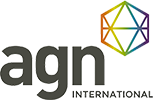How to Stay Prepared for Department of Labor Audits
 When a company hears of a Department of Labor (DOL) audit, they typically tend to panic. The best way to stay prepared for DOL audits is to ensure that you are handling your benefit plans appropriately on a regular basis.
When a company hears of a Department of Labor (DOL) audit, they typically tend to panic. The best way to stay prepared for DOL audits is to ensure that you are handling your benefit plans appropriately on a regular basis.
Here is a DOL audit guide to help ensure your plans are administered appropriately, as well as some questions to ask yourself throughout the process.
DOL Audit Requirements
1. Understand the Following Key Provisions of the Plan Document
- Definition of compensation: Ensure that payroll is aware of the compensation that should be used in calculating deferrals and company contributions. Have payroll review the plan document to ensure that certain payroll codes are designated as eligible and ineligible compensation for retirement plan purposes. When there is turnover in a department or change in payroll provider, this heightens the risk of error.
- Eligibility: What are the eligibility provisions of the plan document? Who is monitoring eligibility? Is there a tracking system in place to ensure that individuals do not miss the opportunity to participate in the plan?
- Excluded employees: If certain employees are excluded from the plan, who ensures that they are properly excluded from the plan? Review the payroll files to verify that a specific code exists to exclude them from the plan.
2. Make Certain That Plan Amendments and Fee Disclosures Are Timely Made
- Work with the service provider to ensure that you are current with the latest tax law changes.
- Review fee disclosures received and consult with an outside provider to ensure accuracy.
3. Understand Annual Compliance Testing Requirements
- Depending on the plan type, certain tests are required to ensure that the plan is not discriminating against certain employees. As the plan sponsor, it is important to understand what tests are required and then more importantly, who will perform them.
- If the third-party administrator is preparing the tests, as is usually the case, once you understand the required testing, what is the process to transfer data to them? Who reviews the data for accuracy at the plan sponsor?
4. Double-Check Distributions From the Plan
- If a vesting schedule exists, it is important to verify the data used by the third-party administrator for accuracy.
5. Evaluate Hardships
- Many times the company does not review the required documentation for hardships.
6. Inspect the Plan Fees
- What fees can be paid from the plan? Are the fees paid by the plan allowed by the document and approved by the proper individuals at the company?
- Have you reviewed them for reasonableness and have you documented that review?
7. Provide Timely Contribution and Loan Repayment Remittance
- Remit contributions and loan repayments as soon as administratively feasible.
The goal of this post is to help prepare business owners and operators to face the challenges of a DOL audit appropriately. If there are other ways you’ve prepared for a DOL audit, leave us a comment. To understand the DOL audit process from start to finish, take a look at part two of this post.
Michelle Buckley is a Vice President in Meaden & Moore’s Assurance Services Group with 23 years of public accounting experience.







